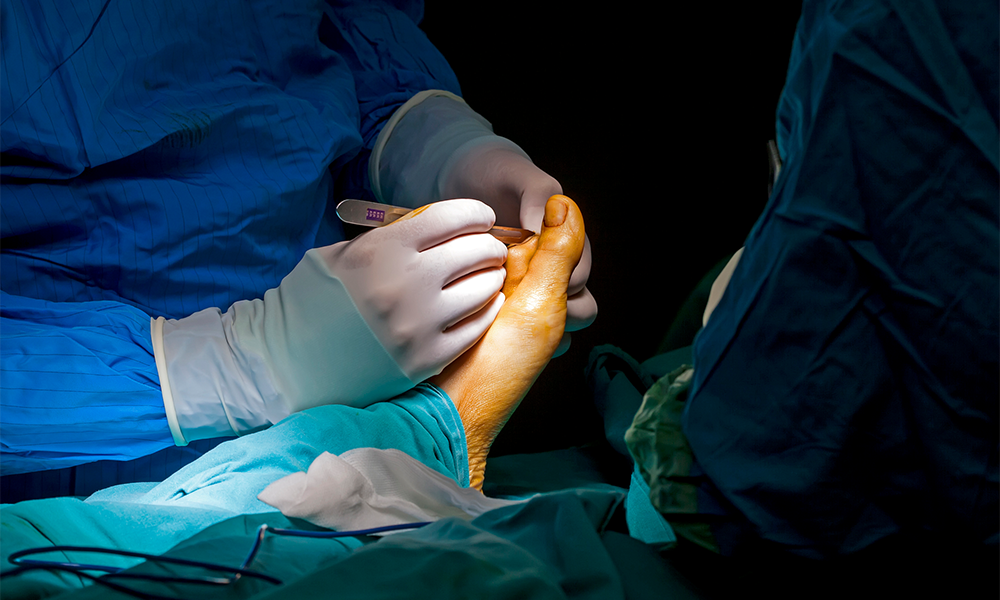Having beautiful and healthy feet is essential if you want to maintain a good reputation; not only that, but it also boosts self-confidence. A complete cheilectomy contains all procedures that would enhance the beauty of your feet: hair removal, callus treatment, and the personal pedicure, among others. To gain this kind of information on how to give yourself the best pedicure at home, visit The Easy Feet Club (link) today! Intro to.
What is a cheilectomy?
“A cheilectomy is the surgical removal of a section of the lip and chin, which can be done to prevent skin cancer.” A cheilectomy is the surgical removal of a section of the lip and chin that can be done to prevent skin cancer. A cheilectomy is a relatively new procedure with few publications. The technique was first described in 1975 and is relatively new to the US.

Things you should keep in your mind
- What is a cheilectomy?
- What is a cheilectomy used for?
- Who should get a cheilectomy?
- How long does a cheilectomy take?
- What are the risks of a cheilectomy?
- What type of anesthesia will be used?
- How much does a cheilectomy cost?
What are the benefits of a cheilectomy?
A cheilectomy is the surgical removal of the cheilectomy part of the wrist. A cheilectomy may be performed to correct a ganglion cyst, remove a ruptured piece of wrist ligament, or correct a tight wrist ligament. A cheilectomy is a surgical procedure that involves removing a portion of the wrist, typically the ganglion cyst, a ruptured ligament, or a tight ligament. This procedure relieves wrist pain and improves the wrist’s motion. Wrist arthroscopy is also performed during a cheilectomy, which is less invasive than a complete wrist discectomy.
Who is a candidate for a cheilectomy?
A cheilectomy is an operation that removes the ligaments on the front of the shin bone to relieve pressure on the nearby nerves. Individuals who are candidates for a cheilectomy typically experience significant lower leg pain, swelling, or difficulty walking due to the nerve location of the fibula and tibia. Individuals treated for malignant change or cancer of the fibula and tibia may also be candidates for a cheilectomy to ensure the tumor is not recurring.
What is the cost of a cheilectomy?
A cheilectomy is an operation to remove the bones or part of the joint that covers the top joint of the finger. A cheilectomy is an operation to remove the bones or part of the joint that covers the top joint of the finger. The cost of a cheilectomy varies depending on the degree of joint space narrowing (groove) in the finger, how long the joint has been limited, and if other procedures were performed simultaneously.
How long does a cheilectomy procedure take?
A cheilectomy is a surgical procedure in which a portion of the lip or cheek is excised, including the muscle underneath. The total duration of the course will vary depending on the extent of the procedure and the individual’s specific situation. A cheilectomy is a surgical procedure in which a portion of the lip or cheek is excised, including the muscle underneath. The total duration of the course will vary depending on the extent of the procedure and the individual’s specific situation.
What are the risks of a cheilectomy?
What dangers can I expect from a clean shave? Because it is a surgery, infection, bleeding, and nerve damage are risks. The chances depend on the age of the patient and their overall health. Older people may be more likely to experience complications from the procedure, including heart problems or stroke. Are there ways to prevent complications after a cheilectomy? Older patients who have heart or kidney problems or have diabetes may want to see their doctors first before having the procedure.
Post-cheilectomy surgery and recovery
Post-cheilectomy surgery, the patient is instructed to stay in bed for at least 24 hours. This period is critical to ensure complete wound closure and allow hemostasis to occur. The patient is typically prescribed pain medication to take for 24-48 hours. After 24 hours, the patient can resume normal activities but avoid excessive exercise, heavy lifting, bending, or straining. Over-the-counter pain medications can be used, but they do not provide the same pain relief as prescription medications.
What is the long-term impact of a cheilectomy?
A cheilectomy is a surgery to remove bone from the joints of the fingers and toes to relieve pain. The long-term impact of a cheilectomy is a reduction in pain. Individuals who have undergone cheilectomy surgery have reduced their prescription medication usage, and many have stopped taking their pain medication altogether. However, pain can return if a person runs out of natural cartilage (the initial reason for the surgery), suffers another injury that creates joint damage, or develops arthritis.
The different types of Cheilectomy procedures
The different Cheilectomy procedures are surgical procedures for those with a transverse jaw. This is a surgical procedure for those with a transverse jaw. In the process, the surgeon will cut the ligaments on either side of the lower jaw and remove a small segment of bone from the skull base on either side of the upper jaw to allow the lower jaw to move forward. In the process, the surgeon will cut the ligaments on either side of the lower jaw and remove a small segment of bone from the skull base on either side of the upper jaw to allow the lower jaw to move forward.
Conclusion
A cheilectomy is when the calf muscle is removed from the heel bone. The surgery is usually done to treat bunions, hammertoes, heel spurs, and other painful conditions. Many patients are happy with the surgery results, while others complain of adverse effects like leg cramps, flexibility, and limited mobility.











